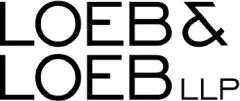- within Food, Drugs, Healthcare and Life Sciences topic(s)
- in United States
- within Food, Drugs, Healthcare and Life Sciences topic(s)
- in United States
- with readers working within the Advertising & Public Relations industries
- within Food, Drugs, Healthcare, Life Sciences, Real Estate and Construction and Employment and HR topic(s)
FDA Stalls, But States Push to Keep It Clean
Congress and FDA lauded the Modernization of Cosmetics Regulation Act (MoCRA), enacted in 2022, as sweeping federal legislation to increase cosmetic safety and quality standards. And, yes, MoCRA significantly expanded FDA's authority to regulate cosmetic manufacturing practices and impose registration/listing and adverse event reporting requirements, and provided a mandate for FDA to issue new rules related to fragrance allergen labeling, among other provisions.
But, fast-forward three years, and FDA has yet to implement many rules and regulations that give teeth to MoCRA. Indeed, industry is still waiting on good manufacturing practices (GMP) regulations and fragrance allergen labeling requirements, and a final rule for testing of talc in asbestos-containing products, among other FDA mandates under MoCRA. And, the likelihood of those regulations is in question. The Trump administration's regulatory freeze, which pauses any new or pending rules until they undergo further review, coupled with federal hiring freezes and mass departures from FDA in recent months, further reduce the likelihood of imminent changes under MoCRA.
To the extent the cosmetic industry thinks only of MoCRA when it comes to cosmetic regulations, it is necessary to shift that mindset. Yes, sweeping change is here, but at the state level.
Step aside FDA, states are taking their own approach to cosmetic safety.
Change Is Here: State "Toxic Free" Laws Ban or Restrict Specific Ingredients
Whether due to frustration at the pace of MoCRA's implementation or simply a desire to take a different approach towards regulating cosmetic safety, at least 17 states have passed or introduced their own laws governing cosmetic and personal care product safety pursuant to so-called state "Toxic Free" laws.
Each state law has its own nuances, but there are four key themes that remain consistent with the states' approach:
- Ingredient Focus: In contrast to MoCRA's focus on manufacturing practices and labeling disclosures, states are taking a more pointed approach by simply banning (or severely restricting) numerous substances used in cosmetics as well as personal care products. Not surprisingly, the ingredients at issue are largely those that have become increasingly familiar to consumers via the "clean beauty" trend, including mercury and mercury compounds, formaldehyde and formaldehyde-releasing agents, certain phthalates, PFAS (per- and polyfluoroalkyl substances), lead compounds and other substances that the states assert are linked to cancer, reproductive harm or endocrine disruption. In this way, states are focused on reducing consumer exposure from the outset by deciding what is and isn't "safe'" for consumers, rather than FDA's preference for ingredient disclosure and manufacturer recordkeeping/reporting.
- Scope: The state laws cover not only "cosmetics" as defined by FDA, but also broader personal care products (e.g., menstrual products and related wellness products) and, in some cases, household cleaning products. And, unlike FDA's approach to holding the entity whose name is on the label largely responsible for regulatory compliance, many state laws have broader enforcement for manufacturers, distributors and even retailers—particularly if they "knowingly" distribute prohibited products to consumers.
- Enforcement: While FDA generally enforces its regulations through warning letters, inspections, seizures and recalls, state regulators focus on the pocketbook. Violations of state laws generally carry civil penalties in addition to the authority to seize violative products.
- Impact on the Industry: The state laws are crafted to generally avoid potential preemption by MoCRA. Further, states impose slight variances on the list of banned and/or restricted ingredients, the parties responsible for compliance and the penalties associated with a violation. Thus, this leaves industry grappling with a patchwork of state laws.
The Time Is Now: Brand Strategy for Compliance
In several states, such toxic-free laws have already gone into effect. For example, California's Toxic-Free Cosmetics Act, which bans 24 ingredients, went into effect on January 1, 2025. Similarly, Oregon's 2023 Toxic-Free Cosmetics Act, effective January 1, 2024, introduced similar bans and disclosure mandates. Colorado, for its part, has passed one of the most restrictive PFAS laws, effective January 1, 2025, restricting PFAS from personal care products that contain intentionally added PFAS, with a penalty of up to $5,000 per violation.
At the other end of the country, Maryland implemented a ban, effective January 1, 2025, on dozens of intentionally added "banned" ingredients, while Vermont and Maine are set to implement similar laws effective January 1, 2026, and January 1, 2027, respectively. Finally, New York has already implemented a restriction on mercury and dioxane (above de minimis levels) in personal care products. The New York State Senate has introduced broader legislation under the "Beauty Justice Act" that, if passed, would ban or restrict dozens of chemicals from personal care products.
In terms of compliance, beauty brands should closely evaluate the nuances of each state law against their product formulations. While the patchwork of state laws presents a compliance burden, brands could consider formulating to the most restrictive state laws, or at a minimum, removing any substances that are consistently restricted across various state laws, while limiting sales in states with more rigorous requirements. Brands should work closely with their supply chain to ensure that all entities in the supply chain are aware of, and adhere to, the state law restrictions. Finally, brands (and retailers) should ensure that vendor agreements require state cosmetic law compliance for any products distributed or sold by the brand or retailer.
The content of this article is intended to provide a general guide to the subject matter. Specialist advice should be sought about your specific circumstances.


